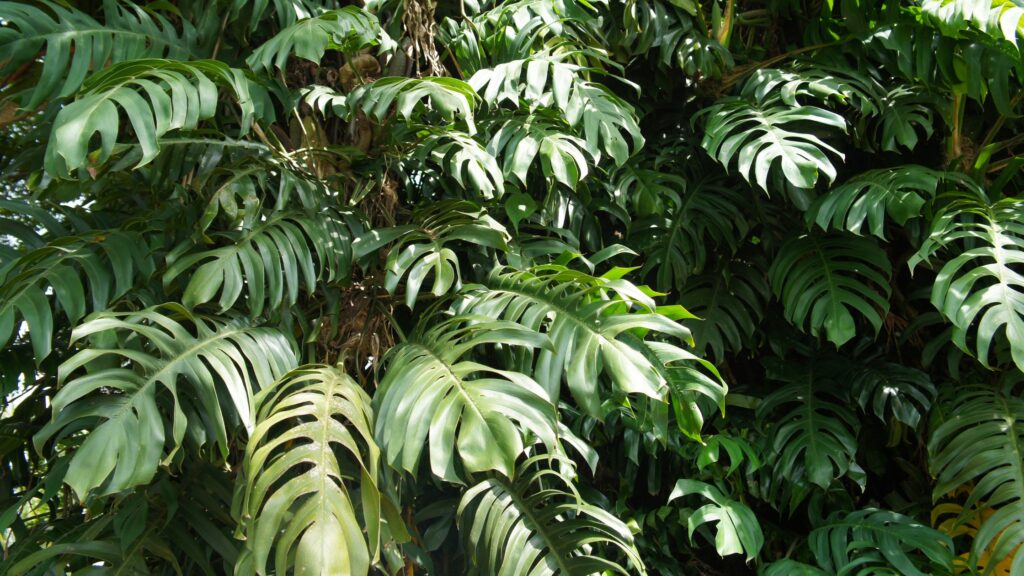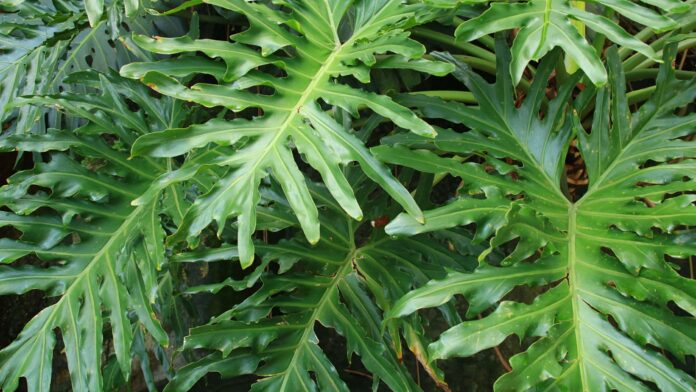Table of Contents
The Split-Leaf Philodendron, a magnificent spectacle of the plant world, is renowned for its large, glossy, and uniquely fenestrated leaves. This tropical marvel, often mistaken for the Monstera Deliciosa, brings a slice of the rainforest into your living space, demanding attention and sparking curiosity. Ideal for those seeking a touch of the tropics with minimal fuss, this guide compiles expert advice to ensure your Split-Leaf Philodendron not only survives but thrives in your care.
Understanding Your Split-Leaf Philodendron
What Sets It Apart
Native to the warm, humid regions of South and Central America, the Split-Leaf Philodendron (Philodendron bipinnatifidum) is a testament to nature’s artistry. Its leaves, large and heart-shaped, are distinguished by dramatic splits and holes, adaptations thought to help the plant withstand the force of tropical downpours and hurricanes. Unlike its often-confused counterpart, the Monstera Deliciosa, the Split-Leaf Philodendron’s fenestrations do not reach the edge of the leaf, offering a distinct aesthetic appeal.
Ideal Conditions for Growth
Thriving in bright, indirect light, this plant’s love for warmth mirrors its tropical heritage. It prefers environments that mimic the understory of a rainforest—filtered sunlight, high humidity, and consistent warmth. However, it’s adaptable and can tolerate medium light, making it a versatile addition to various indoor settings.
Care and Maintenance
Light and Location
Your Split-Leaf Philodendron will flourish in bright, indirect sunlight. A spot near a south or east-facing window, where the light is dappled and gentle, will encourage those iconic large leaves and vibrant growth. Direct sunlight, however, can lead to scorched leaves, while too little light may slow growth and reduce leaf size.
Watering Wisdom
Watering is more an art than a science with the Split-Leaf Philodendron. Wait until the top 2-2.5 inches of soil are dry before watering. These plants are somewhat drought-tolerant, preferring to err on the side of too dry rather than too wet. Overwatering can lead to root rot, a common ailment, so ensuring your plant has well-draining soil and a pot with drainage holes is crucial.
Humidity and Temperature
Emulating the humidity of its native habitat can help your plant thrive. Aim for relative humidity above 40%, achievable through humidifiers, pebble trays, or occasional misting. However, frequent misting should be approached with caution to prevent fungal and bacterial growth. Split-Leaf Philodendrons are comfortable in the typical household temperature range but prefer to stay above 55°F, especially at night.
Propagation and Pruning
Propagation is straightforward with Split-Leaf Philodendrons. Whether through stem cuttings placed in water, moist soil, or moss, ensure each cutting includes at least one leaf node. Root division is another method, ideal during repotting. Regular pruning not only maintains size but can also stimulate fuller growth, allowing you to remove any yellow or damaged leaves and encourage new development.
Feeding for Vigor
A balanced, water-soluble fertilizer diluted to ¼ strength, applied regularly during the growing season (spring through summer), will support your plant’s growth. Fish emulsion and products like Superthrive are excellent choices, promoting lush, healthy foliage and strong roots.
Toxicity Alert
Importantly, the Split-Leaf Philodendron is toxic if ingested, containing calcium oxalate crystals that can irritate the mouth, throat, and stomach of pets and humans. Always handle with care, especially during propagation or repotting, and keep out of reach of curious pets and children.
Troubleshooting Common Issues
- Yellow Leaves: Often a sign of overwatering or too much direct sunlight. Adjust your watering schedule and ensure your plant receives indirect light.
- Brown Leaf Tips: Typically indicate low humidity or inconsistent watering. Increase humidity around the plant and maintain a regular watering routine.
- Pests: While resilient, mealybugs, aphids, and spider mites can be occasional pests. Regular inspections and cleaning of leaves with a soap and water solution can prevent infestations.
FAQs
Can Split-Leaf Philodendrons be grown outdoors? Yes, in regions with warm climates (USDA zones 8-11), they can thrive outdoors. Ensure they are protected from direct sunlight and temperatures below 55°F.
How often should I repot my Split-Leaf Philodendron? Repotting every 2-3 years, or when the plant becomes root-bound, is generally recommended. This is also an ideal time to propagate by division.
Are Split-Leaf Philodendrons good for beginners? Absolutely! Their forgiving nature and minimal care requirements make them perfect for novice plant enthusiasts.
Conclusion
The Split-Leaf Philodendron is a stunning, easy-to-care-for plant that brings a lush, tropical vibe to any space. With the right conditions and a little attention, it will grow into a magnificent green focal point in your home or office. Whether you’re a seasoned plant parent or new to the gardening world, this resilient and gorgeous plant is sure to bring you joy for years to come.




